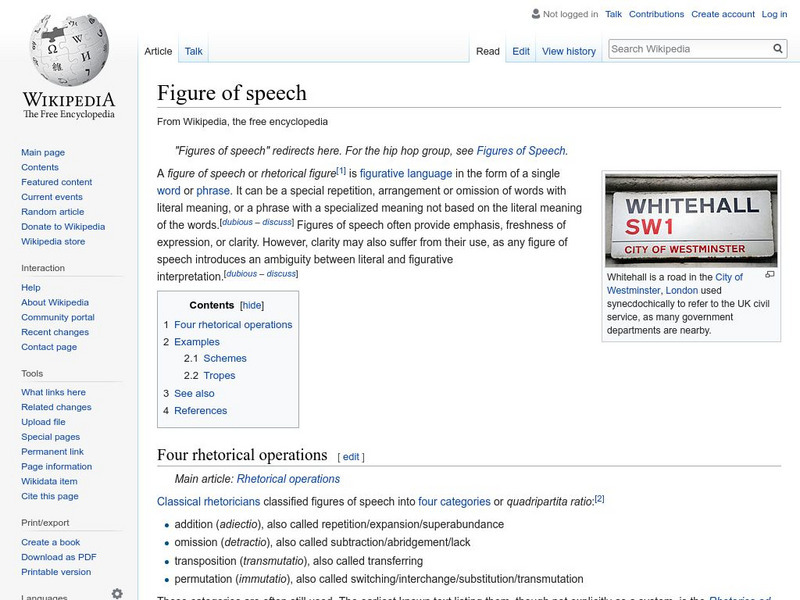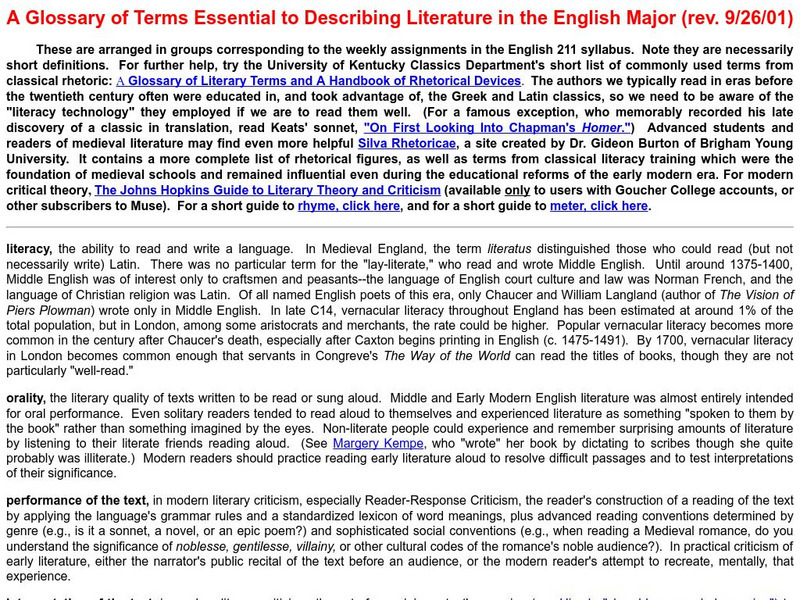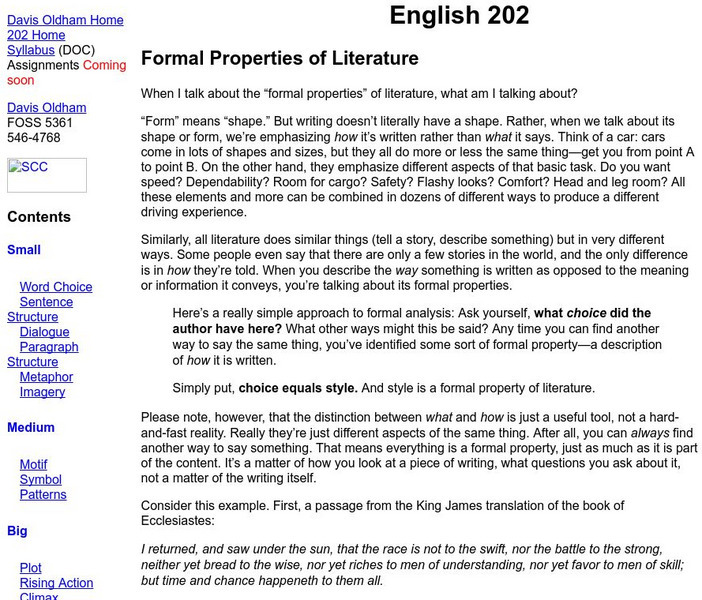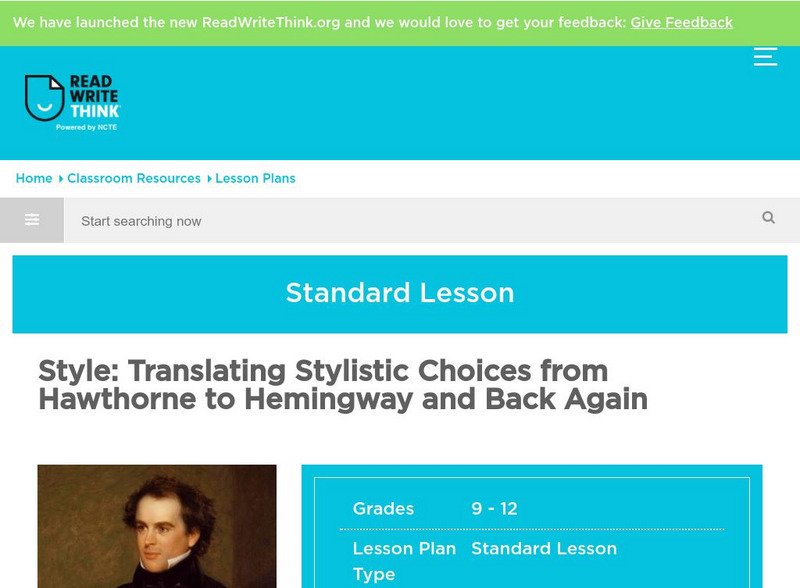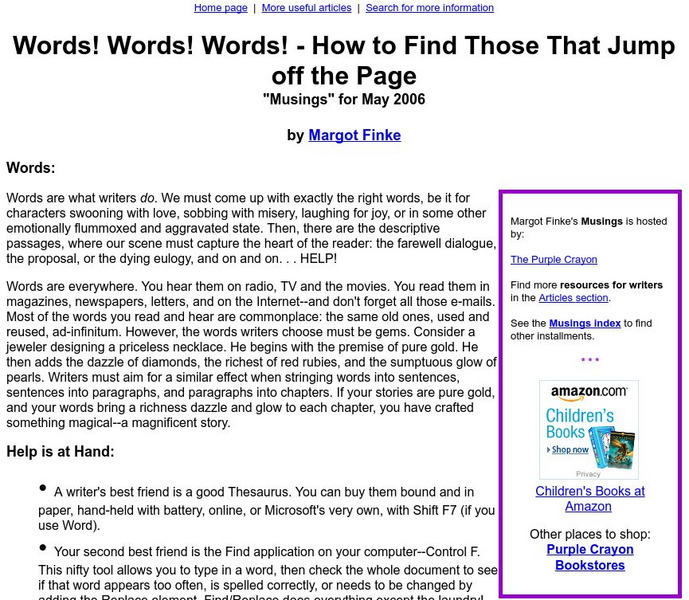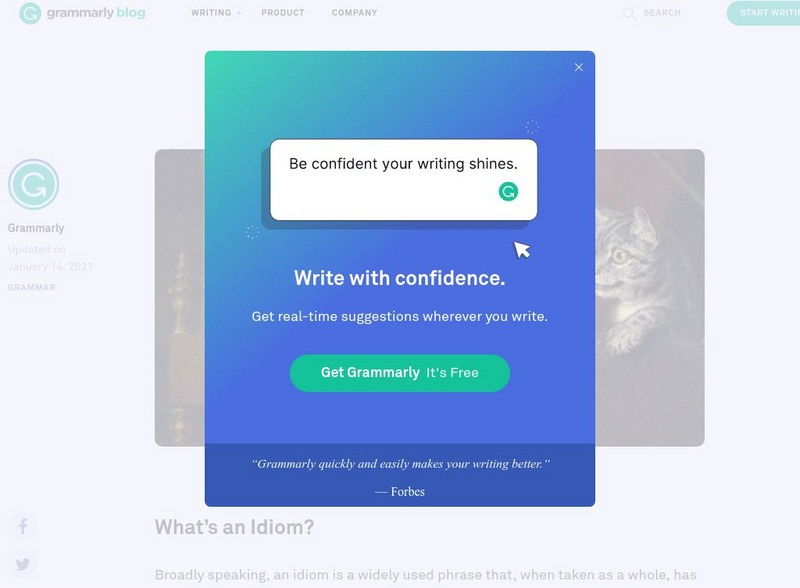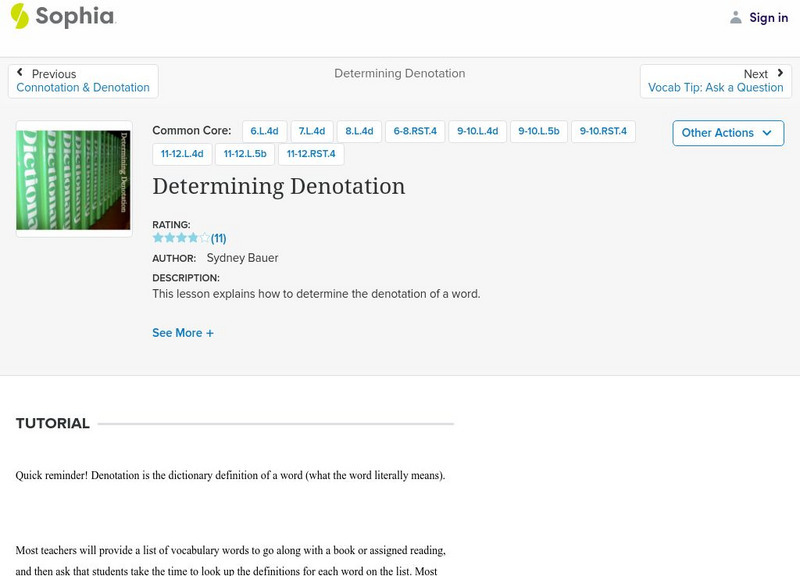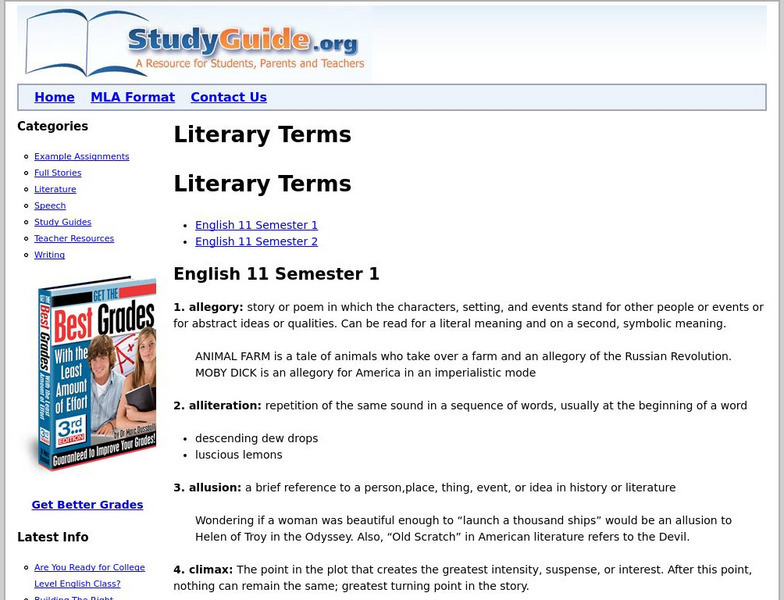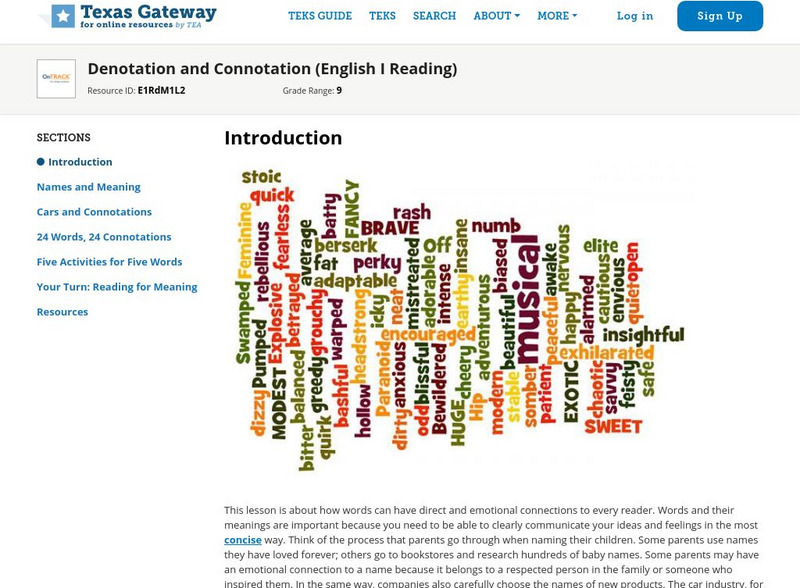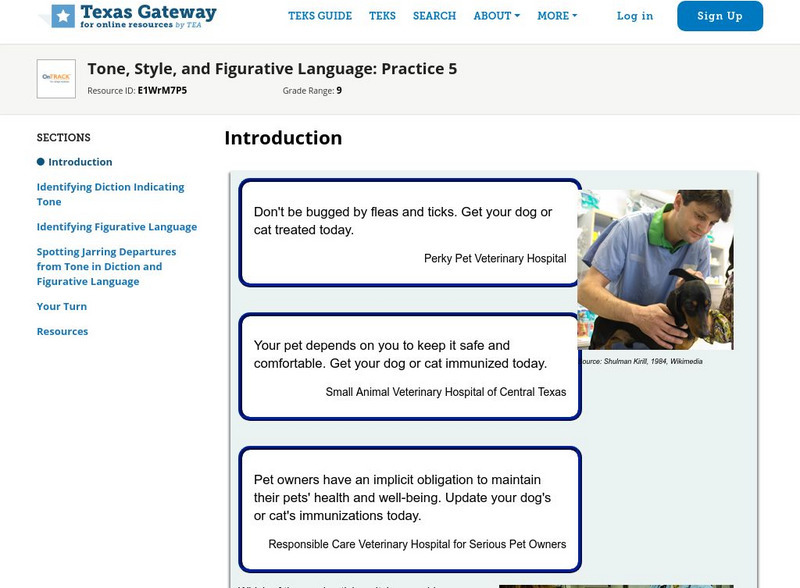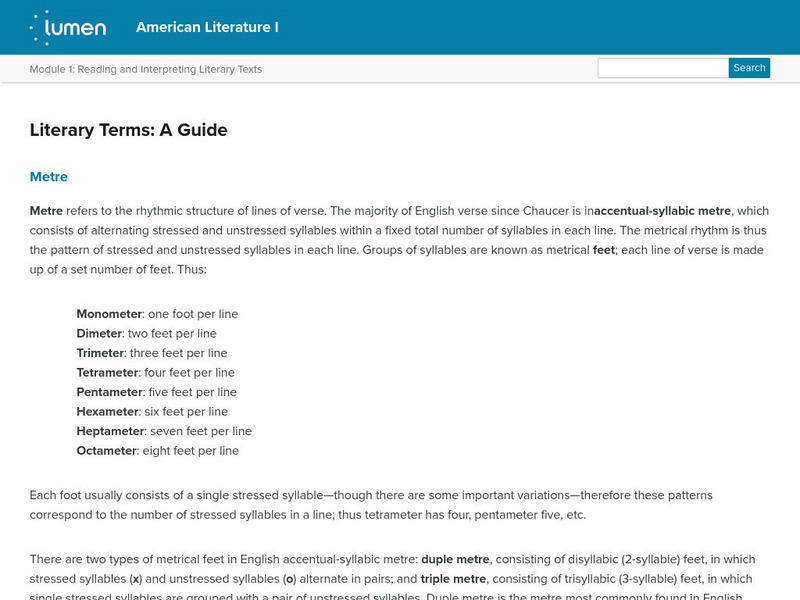Writing Fix
Writing Fix: The Backwards Writing Assignment
In this lesson students will create a backwards poem based on descriptive settings and characters.
Wikimedia
Wikipedia: Figure of Speech
Wikipedia provides a detailed definition of figure of speech, and then includes hyperlinks to different types of figures of speech.
Vocabulary.com
The New Sat: Words to Capture Tone List #1
This site contains a list of 25 words, associated with the tone of passages, from the New SAT. Teachers can digitally assign this list to their students to reinforce the spellings, pronunciations, and meanings of these words.
Wikimedia
Wikipedia: Understatement
This is an encyclopedia entry for the word "Understatement." It defines the term, provides background information about it, and offers references.
Other
Goucher College: A Glossary of Terms Essential to Describing Literature
An exhaustive list of literary terms and techniques with explanations that often include examples, prepared for a college-level survey course in English literature.
Other
Shoreline Community College: Formal Properties of Literature
As students become more aware of text complexity, an understanding of the formal properties of literature becomes more important. This is an excellent examination of the kinds of choices writers make that change the way readers receive...
ReadWriteThink
Read Write Think: Style Choices of Hemingway and Hawthorne
Lesson plan which helps students understand the impact of the literary element of style on a piece of writing. Students read and analyze the works of Ernest Hemingway and Nathaniel Hawthorne. L.11-12.3 Language Functions/Style,...
University of Victoria (Canada)
The U Vic Writer's Guide: Literary & Rhetorical Terms
A comprehensive list of literary terms from the University of Victoria that will give students definitions and examples of how they are used. Terms are sorted by category. L.11-12.4d Verify meaning
Harold D. Underdown
How to Find Words That Jump Off the Page
An excellent resource for a writer struggling to come up with the exact words for which they are looking. Includes very helpful advice and information. Aimed at writers of children's literature, but can also apply to other genres.
AdLit
Ad lit.org: Teaching Word Meanings as Concepts
The most effective vocabulary instruction teaches word meanings as concepts; it connects the words being taught with their context and with the students' prior knowledge. Six techniques have proven especially effective: Concept...
Grammarly
Grammarly Blog: Idioms and Phrases
An explanation and examples of idioms and how to use context clues to understand their meanings.
Sophia Learning
Sophia: Evaluating the Connotation
This lesson focuses on evaluating the connotation of a vocabulary word. It defines connotation and gives an example. It details three steps: read the word in context, determine the tone of the overall reading, and compare the tone with...
Sophia Learning
Sophia: Selecting Topics for Literary Analysis
A series of three PDF documents providing definitions of commonly used terms when preparing to write a literary analysis, explaining how to comment on a literary text, and demonstrating the process of analyzing the literary text "Hills...
Sophia Learning
Sophia: Determining Denotation
This lesson explains how to determine the denotation of words; it defines denotation and offers a plan of action: look up the word in the dictionary, read all meanings paying attention to parts of speech, and compare each of these...
PBS
Wnet: Thirteen: I Have a Metaphor
This instructional activity not only examines the message of Dr. King, but also the words themselves. This is a instructional activity in identifying the literary devices that he used in his "I Have a Dream" Speech. It will introduce the...
Other
Study Guide: Literary Terms: English 11
This is a glossary of literary terms designed for English 11: semester 1 and semester 2.
Texas Education Agency
Texas Gateway: Denotation and Connotation (English I Reading)
Distinguish between the denotative (dictionary) meaning of a word and its connotative (emotions or associations that are implied rather than literal) meaning. L.9-10.5b nuances
Texas Education Agency
Texas Gateway: Importance of Figurative Language: Practice 3 (English I Reading)
Read a text and understand how the figurative language of a literary work contributes to its historical and cultural setting.
Other
Teengagement: Targeted Intervention: Word Choice Shapes Meaning and Tone
In this instructional activity, students interpret how words are used in a literary text and examine how word choice affects meaning and tone. A sample analysis of a poem is presented, terms are defined, and question stems for assessment...
Texas Education Agency
Texas Gateway: Denotation and Connotation (English Ii Reading)
You will be able to distinguish between the denotative (dictionary) meaning of a word and its connotative (emotions or associations that are implied rather than literal) meaning. L.9-10.5b nuances
Texas Education Agency
Texas Gateway: Tone, Style, and Figurative Language: Practice 5
Mark examples of figurative language and the diction that indicate tone.
University of Kentucky
Kentucky Classics: A Glossary of Rhetorical Terms With Examples
Rhetorical terms are defined on this site by the Kentucky Division of Classics. With sentence examples of each in English and Greek. Also related links to Perseus.
Lumen Learning
Lumen: Reading and Interpreting Literary Texts: Literary Terms: A Guide
This is a guide to poetic literary terms such as meter and an explanation of several types of meter, types of stanzas, types of rhyme, etc.
Lumen Learning
Lumen: Writing Skills: Tone, Language, and Appeal
This lesson focuses on using tone, language, and appeal to recognize and evaluate rhetorical approaches to building common ground. RI.9-10.4 word meanings/impact of choice

